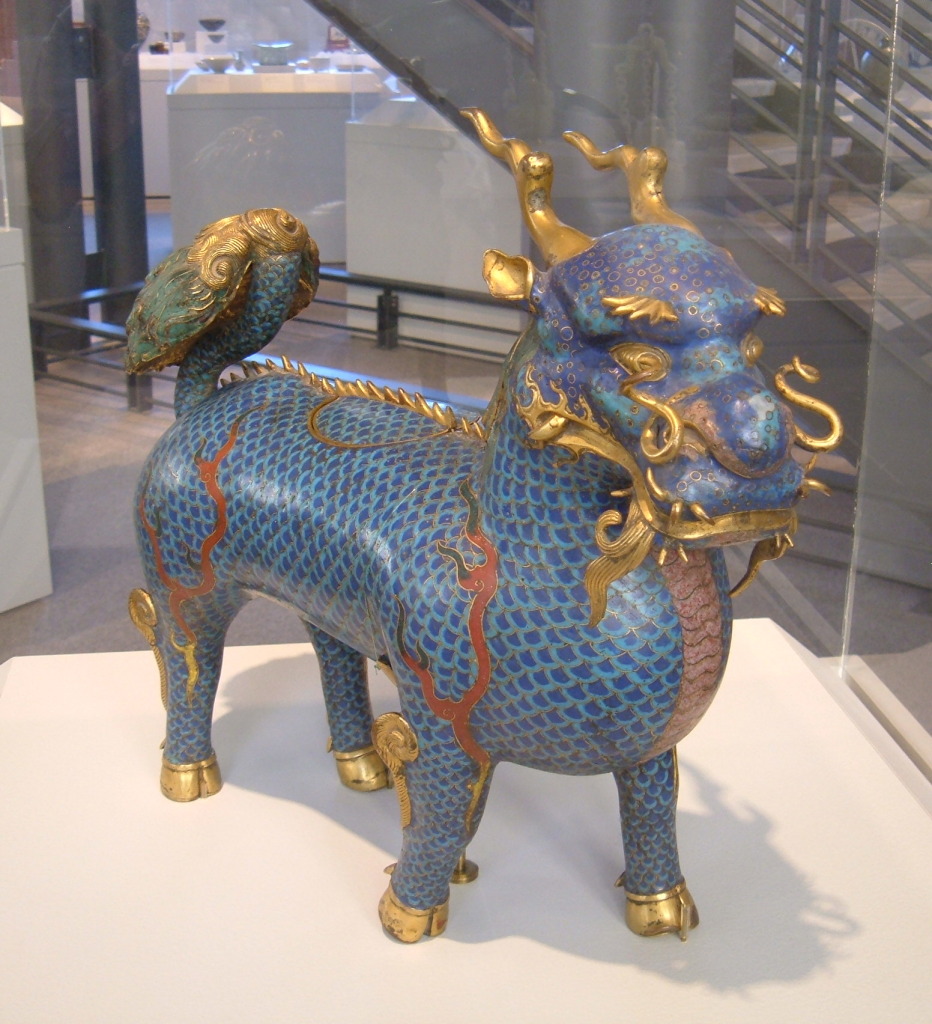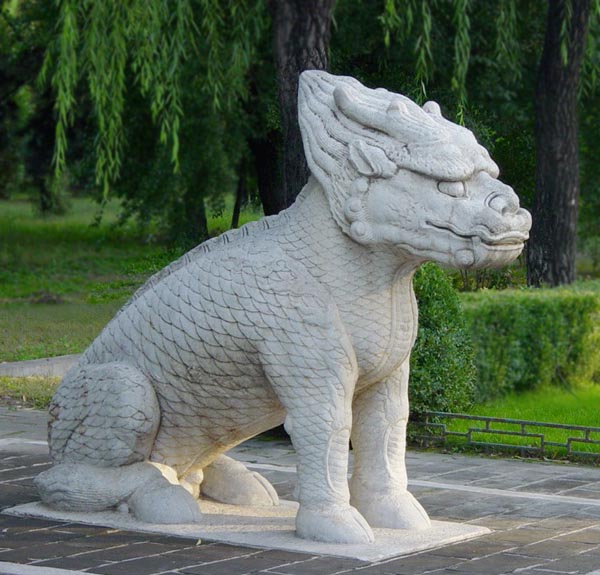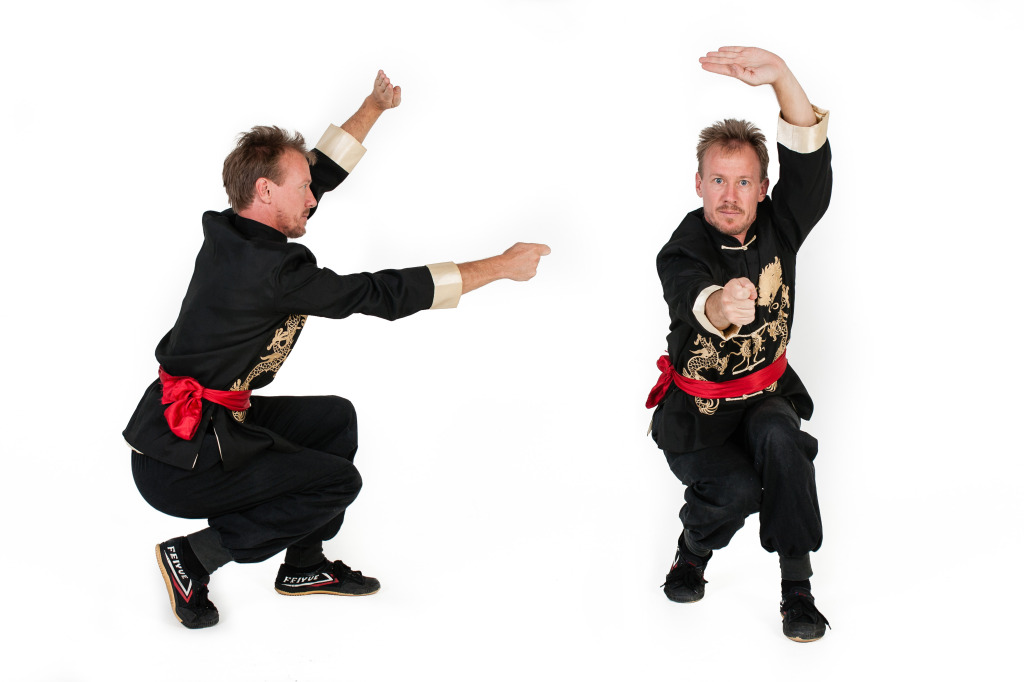Qi Lin – Oriental Unicorn (thanks to Wikipedia)
The Qilin is a mythical hooved Chinese chimerical creature known throughout various East Asian cultures, and is said to appear in conjunction with the arrival of a sage. It is a good omen that brings rui (roughly translated as “serenity” or “prosperity”). It is often depicted with what looks like fire all over its body.

Origins
The earliest references to the Qilin are in the 5th Century BC book Zuo Zhuang. The Qilin made appearances in a variety of subsequent Chinese works of history and fiction. At one point, however, it became identified with the giraffe and even today, the giraffe is called a “qilin” in Korean and Japanese.
The Qilin became a stylised representation of the giraffe in Ming dynasty. It is known that on Zheng He’s voyage to East Africa (landing, among other places, in modern-day Kenya), the fleet brought back two giraffes to Beijing. It is also known that these two giraffes were referred to as “Qilins”. The Emperor proclaimed the giraffes magical creatures, whose capture signalled the greatness of his power.
The identification between the Qilin and the giraffe is supported by some attributes of the Qilin, including its vegetarian and quiet nature. Its reputed ability to “walk on grass without disturbing it” may be related to the giraffe’s long legs. Also the Qilin is described as having antlers like a deer and scales like a dragon or fish; since the giraffe has horn-like “oscines” on its head and a tessellated coat pattern that looks like scales it is easy to draw an analogy between the two creatures.
It is unlikely that giraffes and qilins were regarded as the same creature in pre-modern times however. For example, typical depictions of the qilin have much shorter necks than giraffes. However, the Chinese word 麒 and 麟 both carry Chinese radical 鹿, suggesting that it was originally a type of deer, or perhaps even antelope.
The nature of the beast
Although it looks fearsome, the Qilin only punishes the wicked. It can walk on grass yet not trample the blades and it can also walk on water. Being a peaceful creature, its diet does not include flesh. It takes great care when it walks never to tread on any living thing, and it is said to appear only in areas ruled by a wise and benevolent leader (some say even if this area is only a house). It is normally gentle but can become fierce if a pure person is threatened by a sinner, spouting flames from its mouth and exercising other fearsome powers that vary from story to story.
Some stories state that the Qilin is a sacred pet (or familiar) of the deities. Therefore, in the hierarchy of dances performed by the Chinese (Lion Dance, Dragon Dance, Phoenix dance, etc), the Qilin ranks highly; second only to the Dragon and Phoenix who are the highest.
In the Qilin Dance, movements are characterised by fast, powerful strokes of the head. Qilin Dance is often regarded as the hardest dance to perform due to the weight of the head, stances and the emphasis on “fǎ jìn” (outbursts of strength/power/energy).
Variations
There are variations in the appearance of the qilin, even as seen in a single country such as China owing to cultural differences between dynasties and regions.
Ming dynasty example

A Qilin in the dragon, fish, and ox style of the Ming Dynasty. Note the pair of horns.
In the Ming Dynasty of China (1368–1644) the Qilin is represented as an oxen-hooved animal with a dragon-like head surmounted by a pair of horns and flame-like head ornaments.

Qing dynasty example
The Qilin of China’s subsequent Manchurian dominated Qing dynasty (1644–1911) is a much more fanciful animal. Manchurian depictions of the Qilin depict a creature with the head of a dragon, the antlers of a deer, the skin and scales of a fish, the hooves of an ox and tail of a lion.
Brisbane Kung Fu Example -Unicorn Stance

QiLin Bu/Chi Lin Bu (pron. Chee Lin Boo).
Unicorn stance is created with the beam of the foot about 30cm diagonally behind the front foot. The front foot remains flat on the floor while the back foot is propped on its toes. Squat down until the front thigh is parallel to the ground and the knees are closed together. Weight is evenly distributed and the back is kept straight with the butt tucked in.
